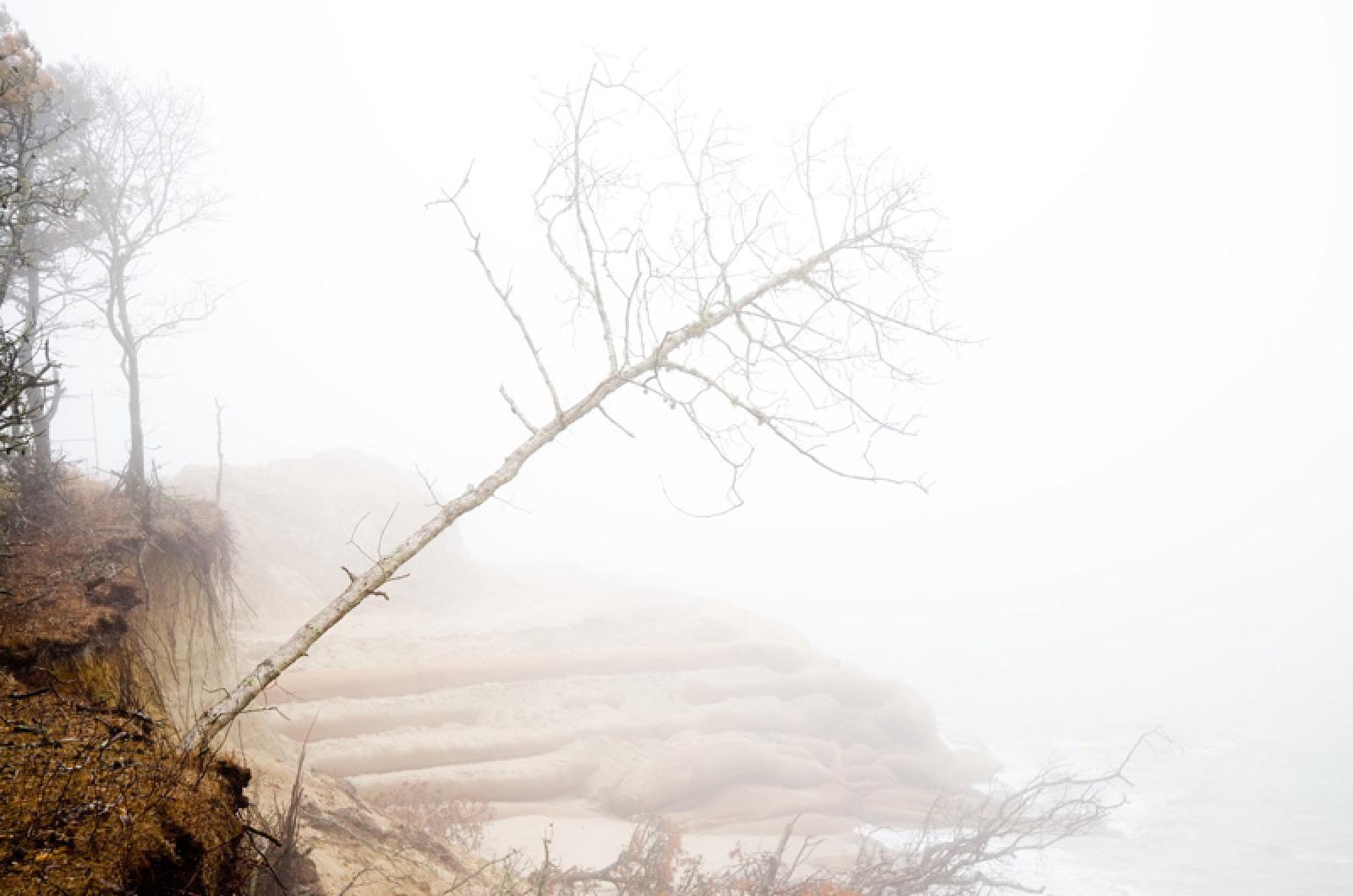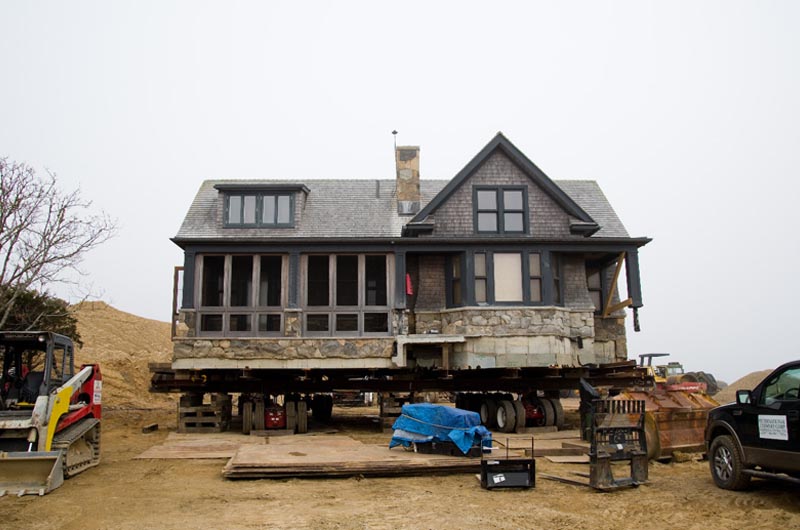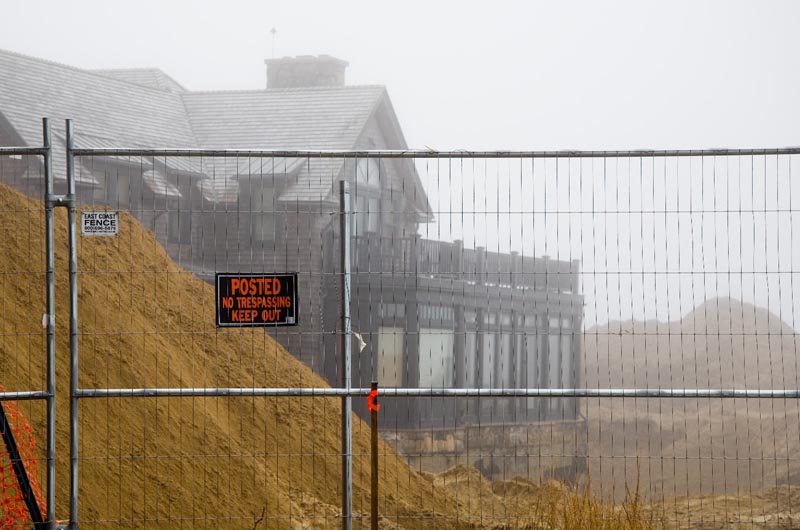A complicated house move that has temporarily transformed part of Wasque from a secluded point at the edge of the sea to a giant excavation and earth-moving operation is well underway. At the property owned by Richard and Jennifer Schifter on Chappaquiddick, the guest house now sits on the basketball court, a large trench has been dug, and a wall of subsoil looms over the site. Excavation has begun around the 8,300 square-foot main house, which is scheduled to be moved in July.
Despite the complexity of the plan to move the Schifter home, project engineers reported this week that everything is proceeding on schedule. But new wrinkles continue to emerge. Debris from the site has been found as far away as the Dike Bridge, and in the most recent development, something of potential archeological significance was discovered.
Archeologists from the Public Archeology Laboratory are scheduled to visit the site early next week to investigate.
The Schifter project got underway in March after an exhaustive review process before town land use boards. The home has been threatened by rapid erosion; in March the bluff was 24 feet away from the swimming pool. The main house, guest house and garage have to be moved, as does a neighboring house the Schifters purchased to make room for the relocation. After the move is completed — the entire process, from excavation to relandscaping, is expected to take about a year — the main house will be 275 feet back from the bluff.
Work crews from International Chimney Corporation and Expert House Movers are on the site, which is secured with a fence.
The pool has been removed. The guest house has been lifted and rolled to a temporary storage site on the basketball court, while the foundation has been demolished and the site backfilled and compacted. The former Leland house has been lifted and rolled to a new location, where a location for a new foundation has been excavated.
According to a memorandum filed with the town by project engineer George Sourati, construction has begun on the main stockpile of fill. The sand is being compacted as it is placed, and a coir system is in place to prevent erosion at the pile.
The site was cleared of trees and topsoil, with some trees, plantings and soil stored at property owned by Gerald Jeffers on Chappaquiddick. The property is being used to store small mountains of topsoil and rows of trees and shrubs in neat lines.
The main focus now, Mr. Sourati told the Gazette, is shoring up the foundation beneath the main house to prepare for steel piles and posts to go underneath. The house will be moved with a large basement, including bowling alley and movie theatre, intact. The actual house move is expected to take place July 15.
“Everything is pretty much according to schedule,” Mr. Sourati said, adding that the conservation commission and planning board have made several site visits and “seem satisfied with the way things are going.”
He said the coir envelope system placed at the bluff to stem erosion is stable and continues to be monitored. While the bluff was eroding at rates approaching one foot a day last year, things are now considered stable. “We don’t expect big storms this summer,” the engineer said.
Mitigation efforts also continue, with sand being placed on the sides of the coir envelope system to avoid “flanking,” or having the ocean cut in to the bluff on the sides of the envelopes. The beach nourishment also makes up for sand that is not being washed into the system because of the envelopes.
So far, 2,660 cubic yards of fill has been placed on the eastern side of the envelopes, according to a memo from Mr. Sourati.
According to files kept by the conservation agent, debris including pool tiles, PVC piping and insulation has been found on the state-owned Leland Beach and as far north as the Dike Bridge, on property owned by the Trustees of Reservations. Clean-up efforts and monitoring are underway and will continue, project manager Rick Pomroy wrote to the conservation commission, adding that some of the debris does not appear to be from recent activity.
However, the potential archeological or cultural discovery may also slow down the progress. The Wampanoag Tribe of Gay Head (Aquinnah) has been on site to review the top layer of soil to look for burial artifacts. Edgartown conservation agent Jane Varkonda said Thursday that a potential “feature” has been spotted at the area where the main house would be moved; she said excavation cannot continue there until the tribe, Public Archeology Lab and others investigate.
A picture taken at the site showed a small rectangle covered by a blue tarp. A progress memo dated April 11 also noted that a few areas of tribal interest had been discovered and marked.
Tribal historic preservation officer Bettina Washington said Thursday that things are in a holding pattern, and “we’re continuing to review the area for cultural and archeological concerns.”
So far, she said, nothing has officially been found, though she said this was not surprising, noting that “the property itself was altered when first built.”
But on the other hand, she said, Wasque was the most eastern place for the tribe, where waters converged. At a place of special significance, she said, one wouldn’t necessarily find any artifacts.
“You don’t leave your trash in your church,” the tribal historian said.









Comments (7)
Comments
Comment policy »